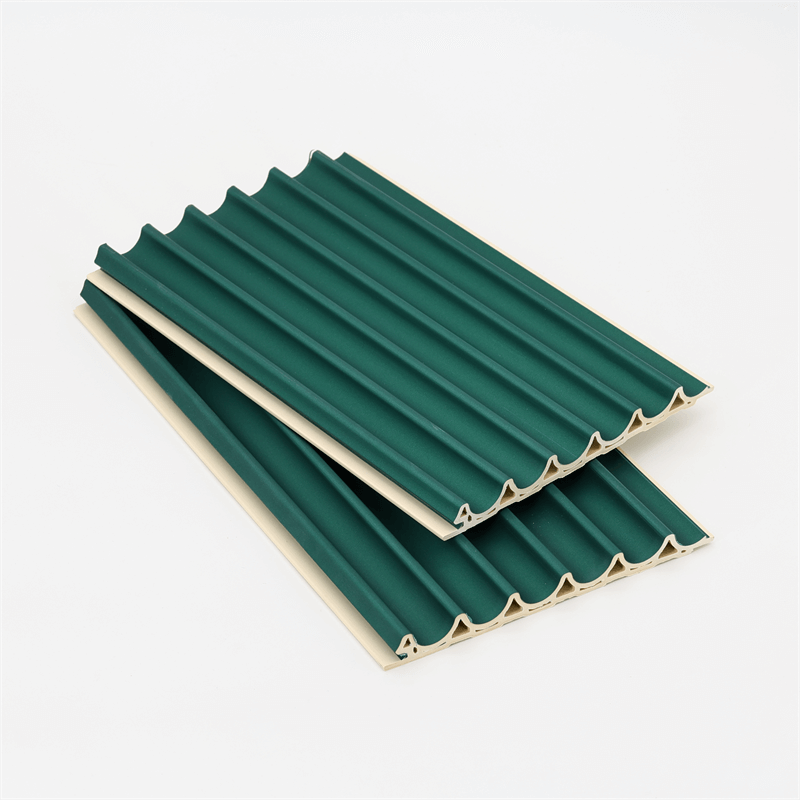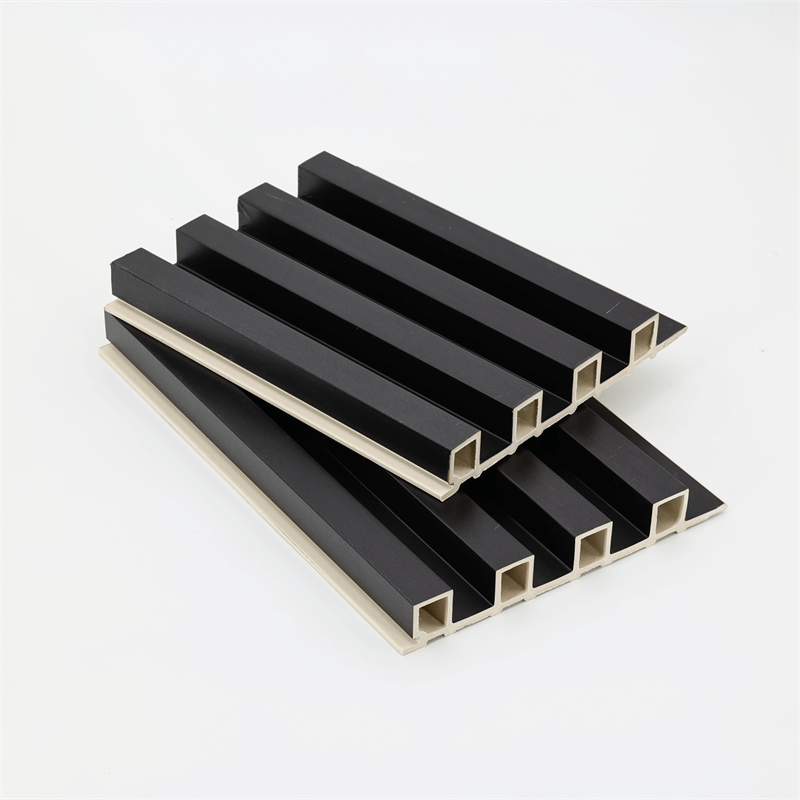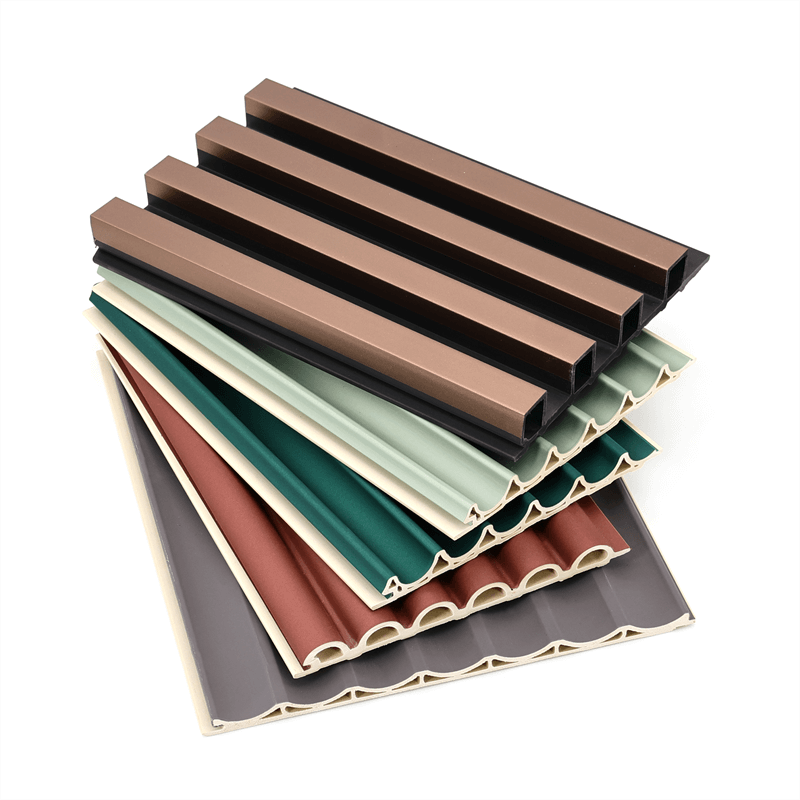In the realm of interior and exterior design, aesthetics play a vital role in creating visually appealing spaces.
Wood-Plastic Composite (WPC) wall panels have revolutionized the design possibilities in the construction industry, offering a wide range of aesthetic options to architects, designers, and homeowners.
This essay explores how WPC wall panels enhance aesthetics through their design flexibility, realistic appearance, color options, and creative applications.

I. Design Flexibility:
A. Malleability: WPC wall panels exhibit excellent malleability, allowing designers to create unique and custom designs.
They can be easily molded into various shapes, sizes, and patterns, enabling architects to unleash their creativity and design distinctive wall surfaces.
The malleability of WPC panels offers endless possibilities in both residential and commercial projects, allowing for the creation of captivating and visually appealing spaces.
B. Texture and Finish: WPC wall panels can be produced with a variety of textures and finishes, providing tactile experiences and adding depth to interior and exterior surfaces.
Whether emulating the texture of natural wood, stone, or other materials, or incorporating innovative designs and patterns, the versatility of WPC panels enables designers to achieve their desired aesthetic goals.
II. Realistic Appearance:
A. Natural Wood Look: One of the primary advantages of WPC wall panels is their ability to replicate the appearance of natural wood.
With advancements in technology, manufacturers have perfected the art of creating realistic wood grain patterns, textures, and colors on the surface of the panels.
This allows designers to achieve the warm and inviting ambiance of natural wood without the associated maintenance and environmental concerns.
B. Authentic Stone and Tile Look: In addition to mimicking wood, WPC wall panels can also emulate the appearance of other materials such as stone or tiles.
By incorporating realistic textures and patterns, these panels offer the visual appeal of natural stone or tile surfaces.
This versatility expands the design possibilities, allowing designers to create cohesive and harmonious spaces with a wide range of aesthetic themes.

III. Color Options:
A. Diverse Color Palette: WPC wall panels come in an extensive array of colors, ranging from earthy tones to vibrant hues.
This diverse color palette enables designers to select panels that align with their desired design concept and overall aesthetic vision.
Whether aiming for a contemporary, traditional, or eclectic look, the broad range of color options ensures that WPC panels can be seamlessly integrated into any design scheme.
B. Customization: Some manufacturers offer customization options, allowing designers to specify the exact color or finish they desire.
This level of customization empowers designers to create truly unique and personalized spaces, reflecting the client’s preferences and individual style.
Customization options further enhance the aesthetic potential of WPC wall panels, enabling them to be tailored to specific design concepts and project requirements.
IV. Creative Applications:
A. Accent Walls and Focal Points: WPC wall panels can be utilized to create eye-catching accent walls or focal points within a space.
The design flexibility and visual impact of these panels allow designers to draw attention to specific areas, adding drama and interest to the overall design.
Whether creating a feature wall in a living room, an entrance lobby, or a commercial showroom, WPC panels provide the perfect canvas for showcasing creativity and making a design statement.
B. Complementary Applications: WPC wall panels can be used in conjunction with other materials to create visually dynamic compositions.
They can be combined with materials such as glass, metal, or traditional wood to achieve a harmonious and aesthetically pleasing juxtaposition.
The versatility of WPC panels allows for seamless integration with various architectural elements, such as windows, doors, or decorative accents, resulting in cohesive and visually striking designs.

Wood-Plastic Composite (WPC) wall panels offer unparalleled opportunities for enhancing aesthetics in interior and exterior design.
Through their design flexibility, realistic appearance, extensive color options, and creative applications, WPC panels empower architects, designers, and homeowners to create visually appealing spaces that align with their aesthetic vision.
The malleability of these panels allows for the exploration of unique shapes and patterns, while the ability to replicate the look of natural wood, stone, or tile surfaces provides a versatile palette of design options.
With an extensive range of colors available and the potential for customization, WPC panels can be seamlessly integrated into any design scheme.
Moreover, their creative applications as accent walls or complementary elements further expand the possibilities for captivating and visually dynamic designs.
By embracing WPC wall panels, design professionals can unlock a world of aesthetic potential, creating spaces that are not only visually stunning but also practical, durable, and sustainable.